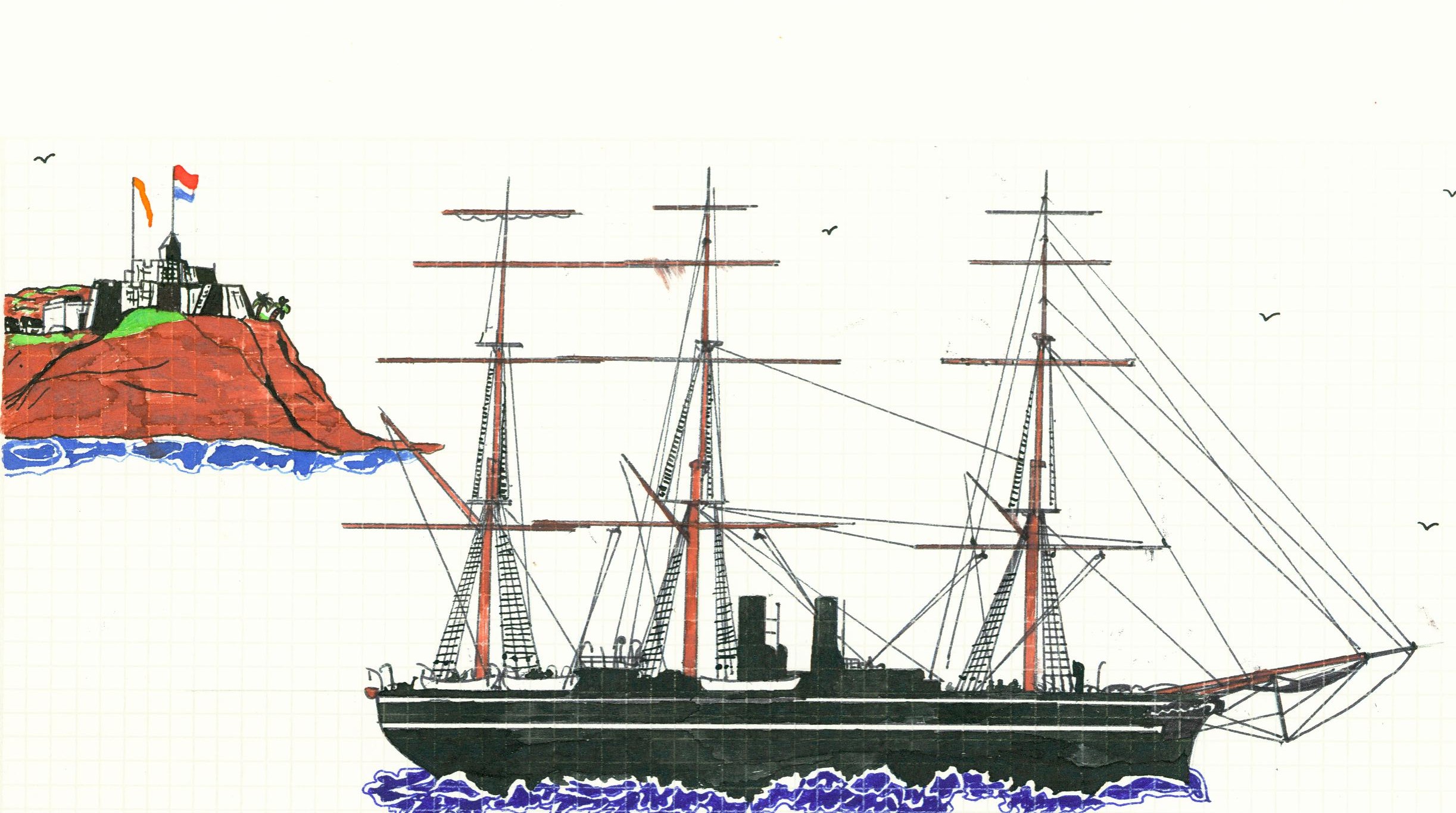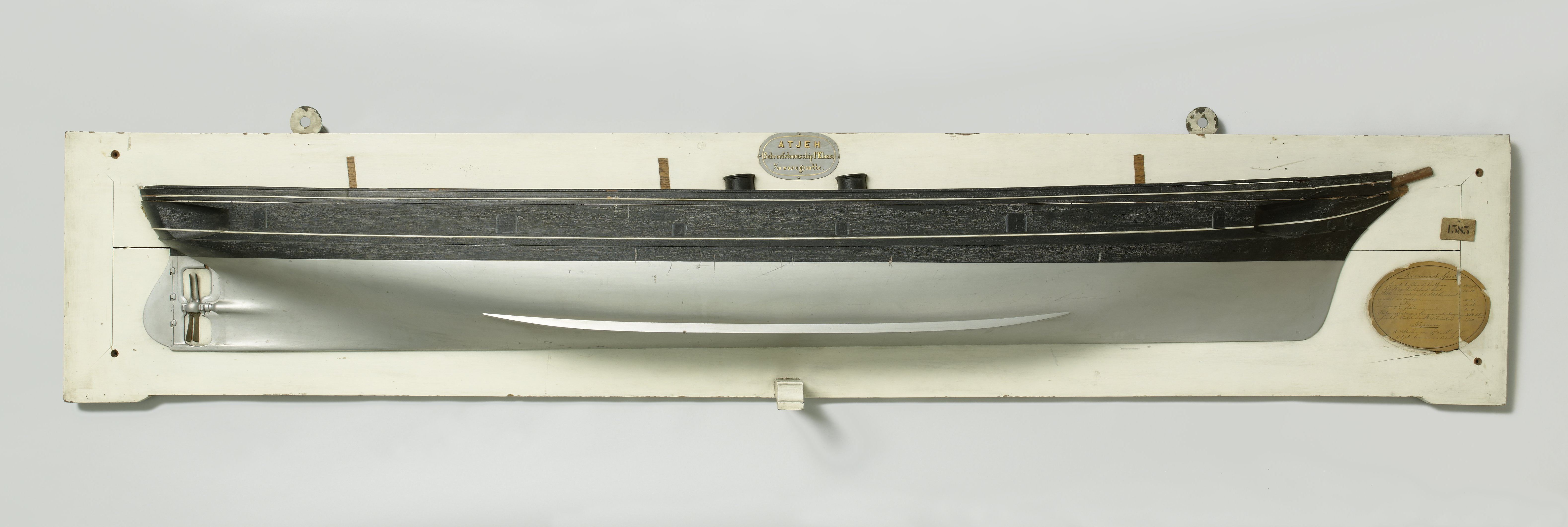Dutch Zr. Ms. Atjeh
Dutch Zr. Ms. Atjeh. Rijksmuseum Amsterdam, Netherlands. Original source
Dutch Zr. Ms. Koningin Emma der Nederlanden
Notes
1. Also called frigate. Call sign GQCN. Laid down at the navy yard at Amsterdam, Netherlands on 3 March 1875, launched on 6 December 1876, commissioned on 1 November 1877, converted into a an accommodation ship at the shipyard De Lastdrager at Den Helder, Netherlands in 1906. Commissioned while replacing the Het Loo in 1908, also used as floating battery for salutes by replacing the 12cm by 7,5cm guns since 1910, further more used for training sailors of the Royal Naval Reserve at Willemsoord, Netherlands until 21 May 1921, decommissioned and since then used as accommodation ship for the air service at Willemsoord, Netherlands, disarmed until 1922, disarmed and stricken in 1929 and finally sold to the N.V. Frank Rijsdijk‘s industrieële onderneming at Hendrik Ido Ambacht, Netherlands for ƒ 23.501,00 to be broken up in May 1935.
2. Also called frigate, call sign GQMF, on stocks as De Ruyter at the naval yard at Amsterdam, Netherlands on 6 November 1876, completed for the half on 31 October 1876, renamed Koningin Emma der Nederlanden on 7 January 1879, launched on 20 January 1879, commissioned on 1 December 1881, decommissioned on 22 May 1896 for repairs, commissioned on 16 June 1897, decommissioned on23 June 1900, converted at the shipyard De Lastdrager at Den Helder, Netherlands into an accommodation ship in 1908, commissioned on 16 November 1908, guard ship at Willemsoord, Netherlands in 1920, captured by the German forces at Willemsoord on 14 May 1940, capsized and sunk at Den Helder in 1942, salvaged in April 1943 and scuttled north of Fort Harssens.
3. Rear admiral George H. Cooper (27 July 1821 USA New York-17 November 1891 Brooklyn, New York, USA) of the US Navy, served in the navy between 1836-1884.
4. Launched by the Societé des forges et Chantiers, France in 1886. His son Mason S. Cooper (1847Portsmouth, Virgiania, USA-2 January 1891, Brooklyn, New York, YSA) was admiral in the Haitian navy.
5. Comus-class screw steam corvette, laid down at the Portsmouth Dockyard, England in 1879, launched on 26 August 1881, completed in 1881, reserve since December 1896 and sold in 1897.
Source
Jaarboek van de Koninklijke Nederlandsche Zeemacht 1886-1887.



